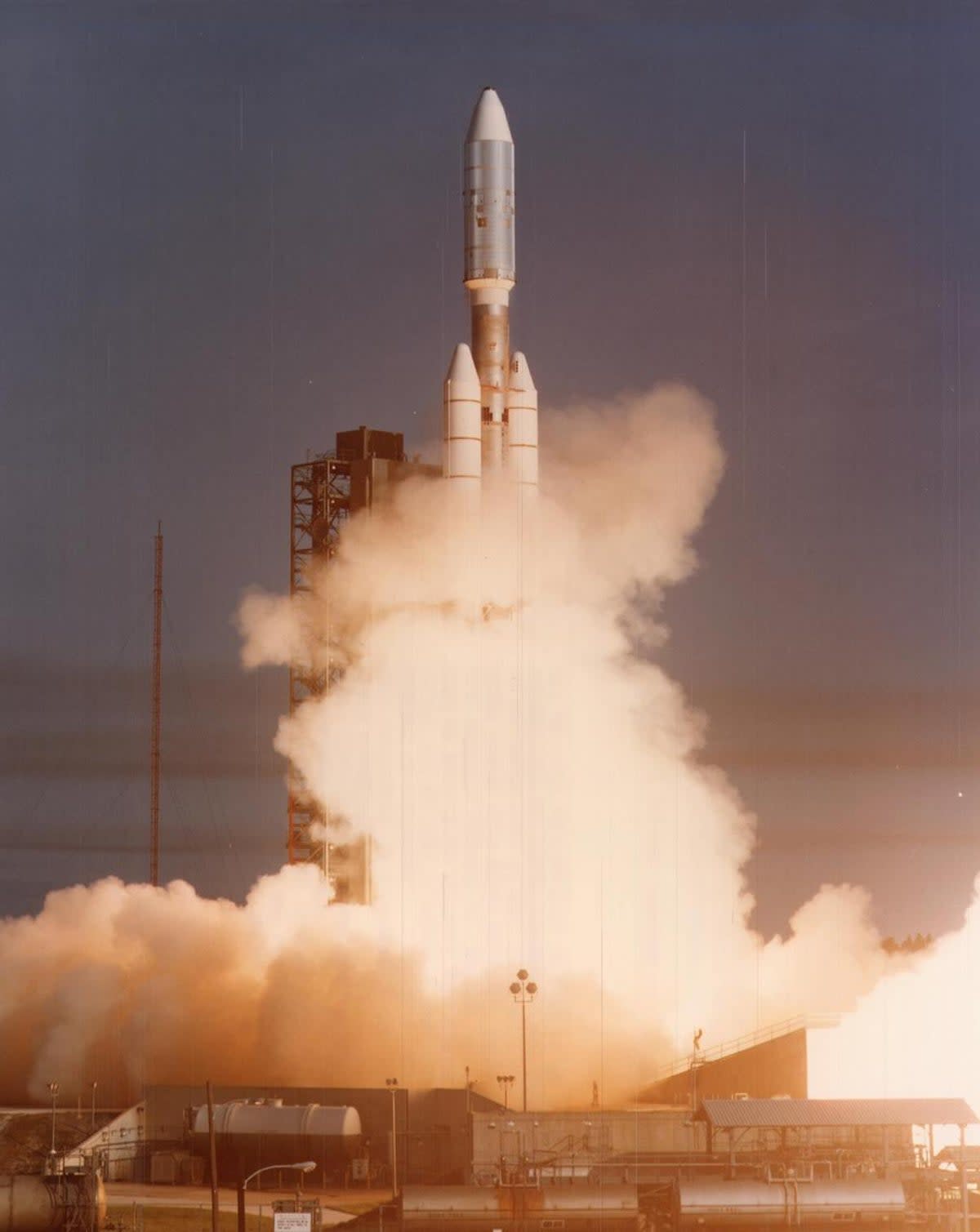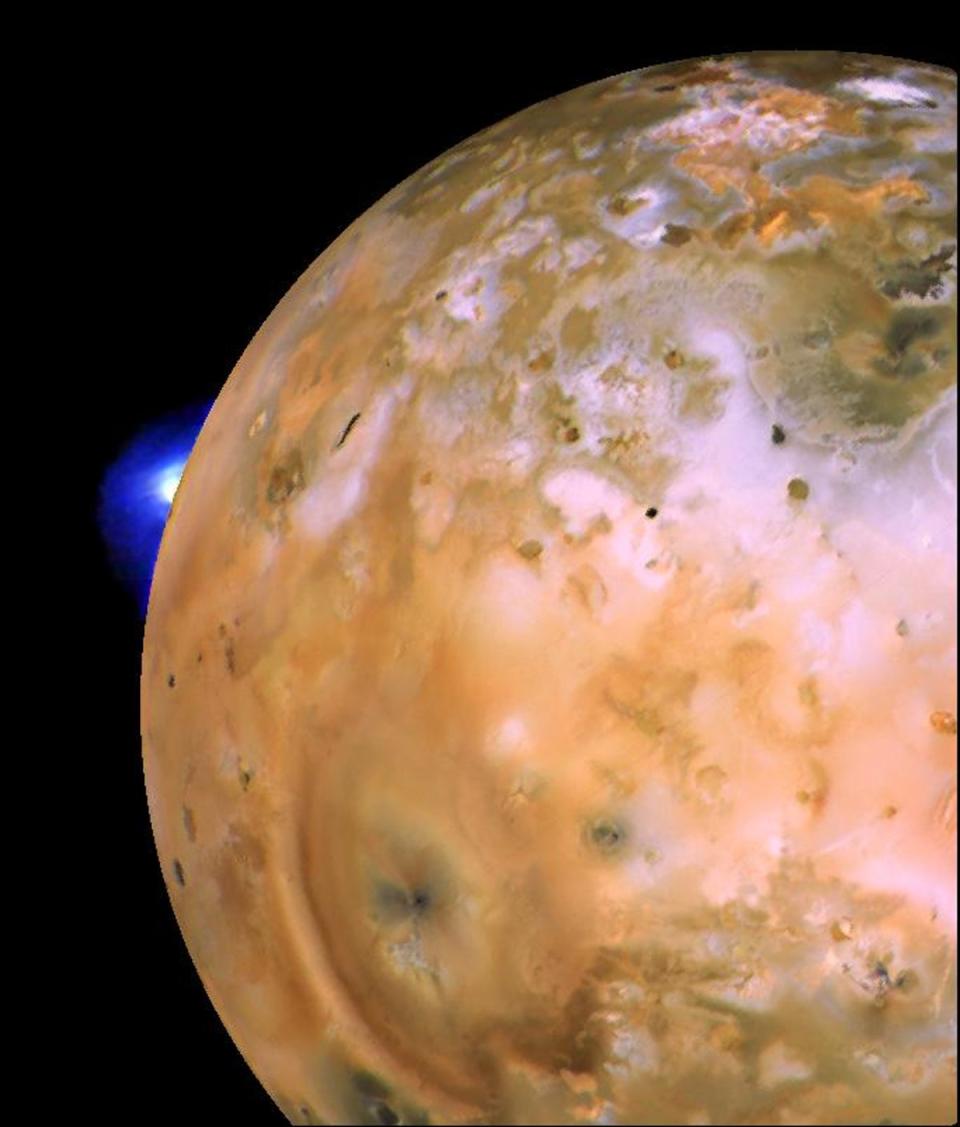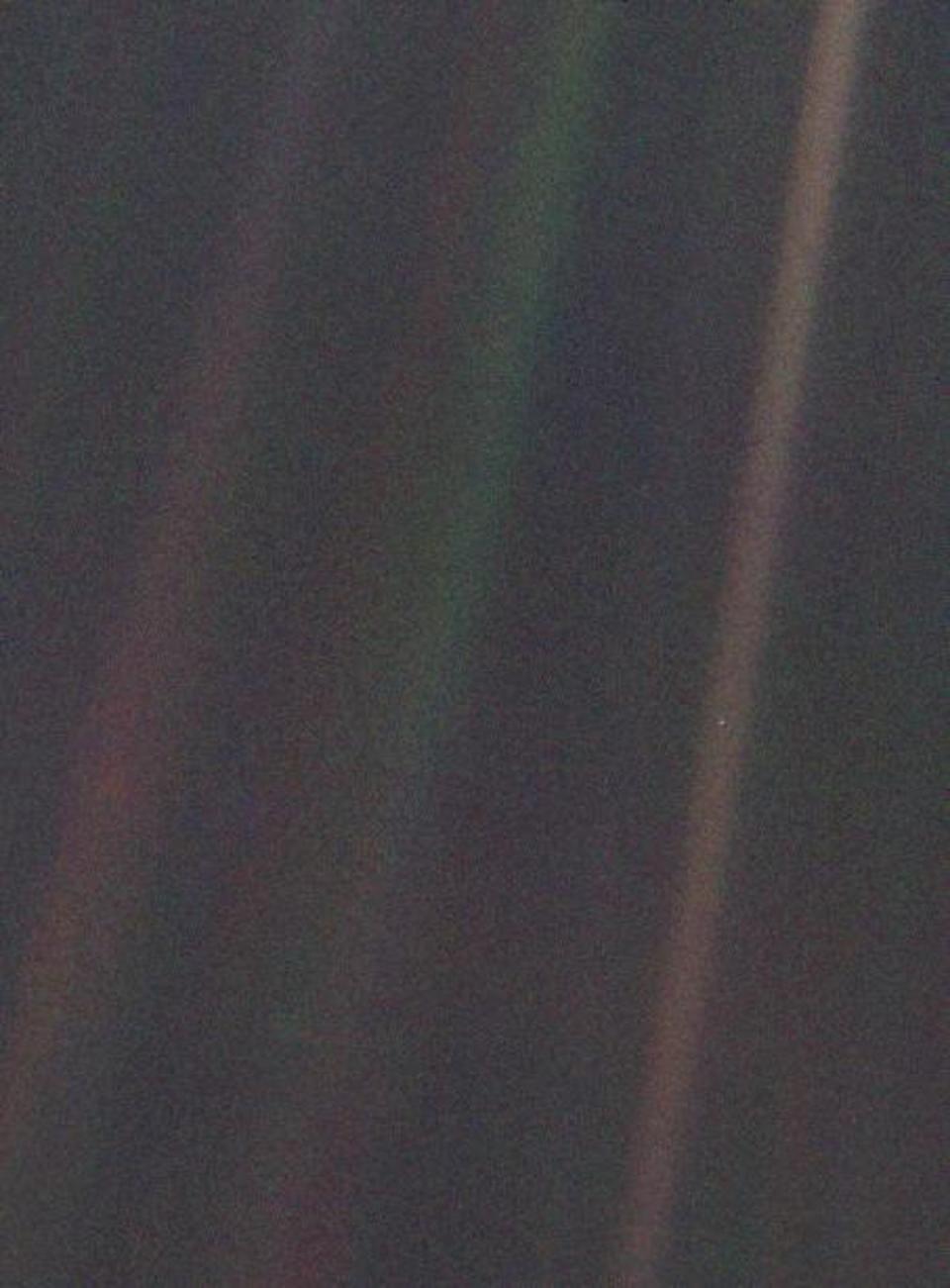Voyager 1: 45 years on, humanity’s most distant emissary is still making discoveries

Linda Spilker has a special relationship with Nasa’s Voyager 1 mission, the space agency’s 1977 mission to the outer planets of the Solar System. She was there 45 years ago, when Voyager 1 launched on what was initially a four-year mission of flybys of Jupiter and Saturn.
“My first job right out of college was to come to [Nasa’s Jet Propulsion Laboratory] and work on Voyager, which I did for 13 years,” Dr Spilker told The Independent in an interview. “What a great way to start your career!”
Today, Voyager 1 is billions of miles from Earth and far outside the Solar System, and Dr Spilker is back on the Voyager 1 team, after a 30-year career working on Nasa’s Cassini mission to Saturn.
“I’ve been back on Voyager for about two years as the deputy project scientist,” she said. “When I was first, given this offer, I thought, ‘Oh, of course, I want to go back and finish up with Voyager.’”
Her bookending her Nasa career with Voyager 1 and the 45th anniversary of the mission — Voyager 1 launched on 5 September, 1977 — has given Dr Spilker a chance to reflect on the legacy of Voyager 1 in terms of engineering, cultural impact and scientific discoveries. The mission changed scientists’ understanding of the Solar System, informed the technology and mission profile of missions like Cassini, and provided up close and personal photographs of the outer planets that would have made Galileo weep and fired the imaginations of generations of science students and space enthusiasts.
“So many missions now are standing on the shoulders of Voyager,” Dr Spilker said. “I can almost see in my mind’s eye, little snippets of what those flybys were like, so I am enjoying this.”
And Voyager 1’s contributions are ongoing, and their ultimate import possibly unpredictable: While the probe has long ceased to take pictures, it still takes readings from the cold depths of interstellar space as it speeds long at 38,000 miles per hour, and at more than 15.5 billion miles from Earth, is humankind’s most distant emissary to the cosmos — its messages home now take 22 hours to reach us.
Voyager 1, like its sister Voyager 2, carries a “golden record” that contains recordings of sounds from Earth, just in case someone else out there finds it.
Beginning the voyages
Dr Spilker’s role in the Voyager 1 mission began when she was a child.
“When I was in third grade, I got my first little telescope and would use it to look at the Moon and look at Jupiter and and find Saturn and look at their moons,” she said. “I always had an interest in math and science.”
A college degree in physics in hand, the then not-yet Dr Spilker took the job at JPL she saw posted in a newspaper. She was offered the chance to work on the ongoing Viking Mars lander mission, or join something new called Voyager, and asked where Voyager might be headed.
“They said, well, Jupiter, and Saturn, and if all goes well onto Uranus, and Neptune,” Dr Spilker said. “I remembered back to those days of looking through my telescope, and I thought, I want to go see these planets up close — sign me up.”
The Voyager program itself, meanwhile, got started because the late 1970s saw Jupiter, Saturn, Uranus and Neptune move into a rare planetary alignment that could allow two spacecraft to visit the four planets. Voyager 2 launched on 20 August 1977, and Voyager 1 launched on 5 September.
“That’s really what pushed the mission forward,” Dr Spilker said. “We had to go when we did, because otherwise we’d have to wait 176 years to visit basically four planets in 12 years.”
But 12 years was really the extreme case for an extended mission. The Voyager spacecraft were built with a four to five-year primary mission in mind, she said. Nobody then would have expected Voyager 1 to still be conducting science 45 years later — they couldn’t even predict the primary discoveries of the spacecraft as it offered the first up close looks at the moons of Jupiter and Saturn.
New Moons
“The big question was, what were those moons like?” Dr Spilker said. The one good example scientists had of a moon in our Solar System was Earth’s Moon’s, an airless, lifeless natural satellite with a highly cratered and ancient surface.
When it reached the Jovian system in 1979, Voyager 1 showed that some of Jupiter’s moons, such as Callisto, and to some extent Ganymede, exhibited the familiar cratered and battered surface seen on Earth’s Moon. But others, such as the icy, ridged surfaced Europa, blew scientists away with how different they were.
“And then there was Io,” Dr Spilker said. “I think in some ways Io was maybe one of the highlights of the mission.”

This strange Jovian moon was the color of pizza, as Dr Spilker puts it, and exhibited a young surface without any craters, a surface scientists eventually realized was actively shaped by current volcanism.
“That started to change our view of moons that they didn’t have to be old and frozen,” she said. And with the discovery of Europa around Jupiter, and Enceladus around Saturn, scientists learned that “moons can have global liquid water oceans with the potential for habitability. That may be where we might find life might be in the oceans of these worlds.”
Personally, it was a very exciting time for Dr Spilker and her colleagues, and she still remembers the camaraderie and energy as the images streamed back slowly from Voyager 1, filling up TV monitors one line at a time.
“We had the timeline, this list of when the pictures were coming back,” she said. “You didn’t want to miss anything. You’d bring your sleeping bag in and you’d set your alarm clock for when you wanted to get up and get a couple hours sleep and then you’d be up for the next really exciting set of pictures.”
Family portrait
By 1980, Voyager 1 had completed its planetary science mission, having visited Jupiter, Saturn, and especially Saturn’s Moon Titan. It was time for the spacecraft’s extended mission to begin, as Voyager 1 transitioned into the long cruise into the depths of deep space.
But before it left the Solar System, Voyager 1 turned back and took what would become a very famous “family portrait” of the planets it left behind from a distance of more than 40 times that of Earth from the Sun.
“It’s really special because of the way it turned out. There’s scattered light in the cameras and so it looks like Earth was captured in a sunbeam,” Dr Spilker said, noting it was this image, with Earth appearing as a tiny mote of dust in a ray of light, that led the late scientists and TV personality Carl Sagan to call it a “pale blue dot.”

“All the life that we know,” Dr Spilker added, “is on this tiny, fragile world.”
The famous image was taken in 1990. Shortly afterward, the Voyager team powered down the spacecraft’s cameras — It would spend the rest of its life flying blind like a deep cave dwelling creature.
“Even if we did have functioning cameras, there’s really nothing in space to see where Voyager is now,” Dr Spilker said, and so the cameras were turned off, as were eventually the heaters and other unnecessary instruments in a bid to save power for those that mattered. “Every year we have four watts less power.”
Today, Voyager 1 retains as operational a magnetometer that measures magnetic fields, a cosmic ray detector for measuring radiation from the distant universe, and two instruments for measuring charged particles.
It was that array of remaining instruments the Voyager 1 team had to use to detect when the spacecraft reached its next milestone, the crossing of the heliopause, the once hypothetical line where the outer influence of the Sun’s atmosphere met the interstellar medium; the boundary with interstellar space.
“The big puzzle at that time is we knew the heliopause was out there somewhere. But we didn’t know where,” Dr Spilker said. “One of the things we knew would happen is that the cosmic ray count would go up, the abundance of cosmic rays — the heliopause roll acts as a shield protecting the Solar System.”
Rather than making a clean break, Voyager 1 appeared to pass in and out of the Solar System, hinting that the heliopause is less a solid line and more of a dynamic boundary that changes with changes in the flux of charged particles, known as the solar wind, streaming from the Sun.
Eventually however, Voyager 1 crossed and did not return from the heliopause boundary. The date was 25 August, 2012 — Voyager 1 was in interstellar space, and Dr Spilker and other Voyager scientists have been measuring the particles it encounters there.
“This is a cloud of material produced by a supernova explosion from another star,” she said. “So in a real sense, we’re measuring star stuff.”
But as the most distant human artifact ever created, Voyager continues to break new ground, leading to surprises. One thing scientists expected to happen when the spacecraft crossed the heliopause was that Voyager 1’s manometer should begin measuring the magnetic field of the interstellar cloud, rather than the Sun’s magnetic field.
“And lo and behold, that hasn’t happened yet. It’s been 10 years since Voyager One crossed the heliopause and the magnetic field just hasn’t rotated in the Intersolar direction yet,” Dr Spilker said. “Why? We don’t know.”
Not that the mystery is a bad thing.
“So many interesting puzzles, and that’s great,” Dr Spilker said. “Scientists love it when things turn out to be not what’s expected but something new. Then you have to figure out what is that something new.”
Gratitude and hard choices
As far as Voyager 1 has traveled, it’s still close enough that light overtake it within a single Earth day: It won’t be still sometime in 2026 or 2027 that Voyager 1 will reach one light day from Earth, that is, it will take light — or a radio signal from Nasa — a full 24 hours to reach the spacecraft.
“To put that in context, the nearest star is four light years away,” Dr Spilker said. “In that sense, we’re still really close to our Sun.”
Voyager 1 will continue on for tens of thousands of years — there’s nothing to stop it — but not as a functional spacecraft. At some point in the coming years, the nuclear thermal power source that has kept Voyager 1 alive for nearly a half century will decay to the point where the spacecraft will shut down for good.
Up until that point, scientists like Dr Spilker will continue to monitor Voyager 1’s health and one by one, will have to decide what to turn off next in order to save power.
“We’ve done the easy things, and so now it’s a question of really making some hard choices,” she said. “We hope we’ll find other clever solutions.”
But while Dr Spilker and her colleague may mourn Voyager 1 when it’s finally gone, right now, they’re thankful just to keep following the distant spacecraft as it goes where no one has gone before, or is likely to follow anytime soon.
“Every moment with Voyager one at this point is a gift,” she said.

